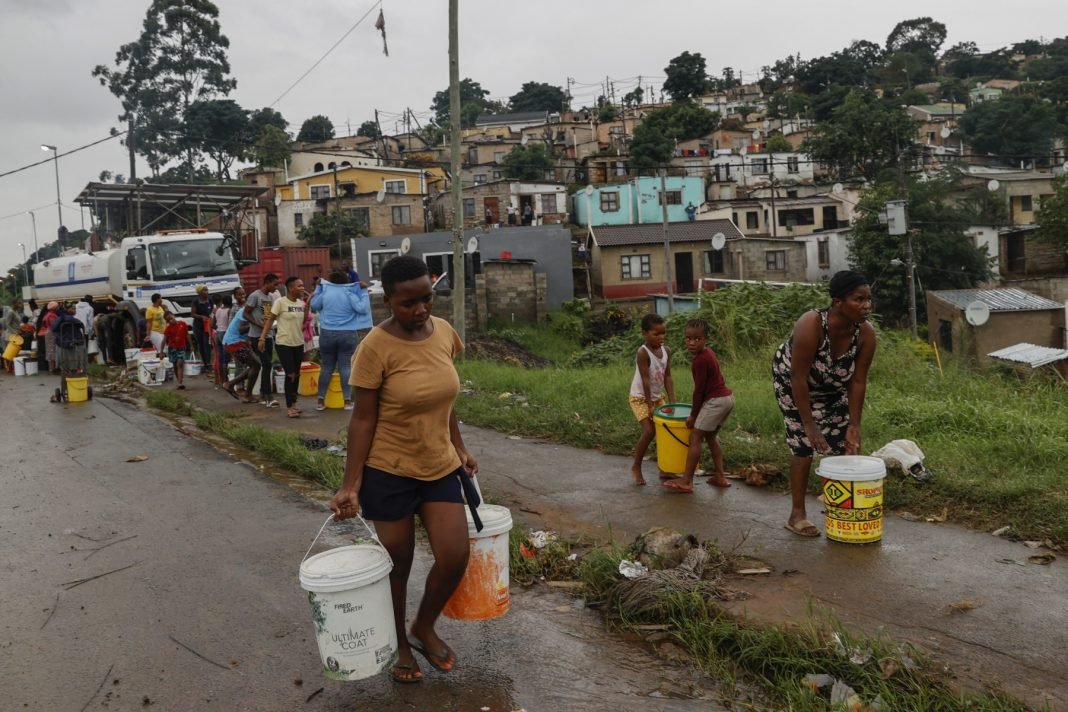
DURBAN (South Africa), April 14 (NNN-AGENCIES) — The death toll from devastating floods in and around the South African port city of Durban has risen to 306, the government said, after roads and hillsides were washed away as homes collapsed.
The heaviest rains in 60 years pummelled Durban’s municipality, known as eThekwini. The storm is the deadliest on record in South Africa.
“By the evening of 13th of April, we have been informed that the death toll from the floods disaster in KZN (KwaZulu-Natal) province has risen to 306 people,” Nonala Ndlovu, spokeswoman for the provincial disaster management department said.
Her office said the death toll is “one of the darkest moments in the history” of KZN.
Earlier Wednesday Ndlovu had put the toll at 259.
President Cyril Ramaphosa, has described the floods as a “catastrophe” and a “calamity”.
“Bridges have collapsed. Roads have collapsed. People have died,” he said, adding that one family lost 10 members.
At least 248 schools have been damaged
“This is a catastrophe of enormous proportions,” he said, addressing a local community after inspecting the damage from the floods.
The search for missing persons is still going on, said Ramaphosa, promising to “spare nothing” in dealing with the disaster and offering assistance to the affected.
“This disaster is part of climate change. We no longer can postpone what we need to do… to deal with climate change.
“It is here, and our disaster management capability needs to be at a higher level,” said the president.
The United Methodist Church in the township of Clermont was reduced to a pile of rubble. Four children from a local family died when a wall collapsed on them.
Other homes hung precariously to the hillside, miraculously still intact after much of the ground underneath them washed away in mudslides.
Meanwhile a dozen crocodiles that went missing from breeding ponds after the heavy rains swamped a crocodile farm near Durban have reportedly been recaptured.
The storm forced sub-Saharan Africa’s most important port to halt operations, as a main access road suffered heavy damage.
Shipping containers were tossed about, washed into mountains of metal that rose taller than the elevated highways.
Sections of other roads were washed away, leaving behind gashes in the earth bigger than large trucks.
The main highways were littered with trees and mud so deep that bulldozers were called to help clear it.
Highway barriers lay twisted like pipe cleaners along the side of the roads.
“We see such tragedies hitting other countries like Mozambique, Zimbabwe, but now we are the affected ones,” Ramaphosa said as he met with grieving families near the ruins of the church.
South Africa’s neighbours suffer such natural disasters from tropical storms almost every year, but Africa’s most industrialised country has been largely shielded from the storms that form over the Indian Ocean.
These rains were not tropical, but rather caused by a weather system called a cut-off low that brought rain and cold weather to much of the country.
When storms reached the warmer and more humid climate in Durban’s KZN province, even more rain poured down.
Rain continued in parts of the city on Wednesday afternoon, and a flood warning was issued for the neighbouring province of Eastern Cape.
The national police force deployed 300 extra officers to the region, as the air force sent planes to help with the rescue operations.
More than 6,000 homes were damaged. — NNN-AGENCIES






